

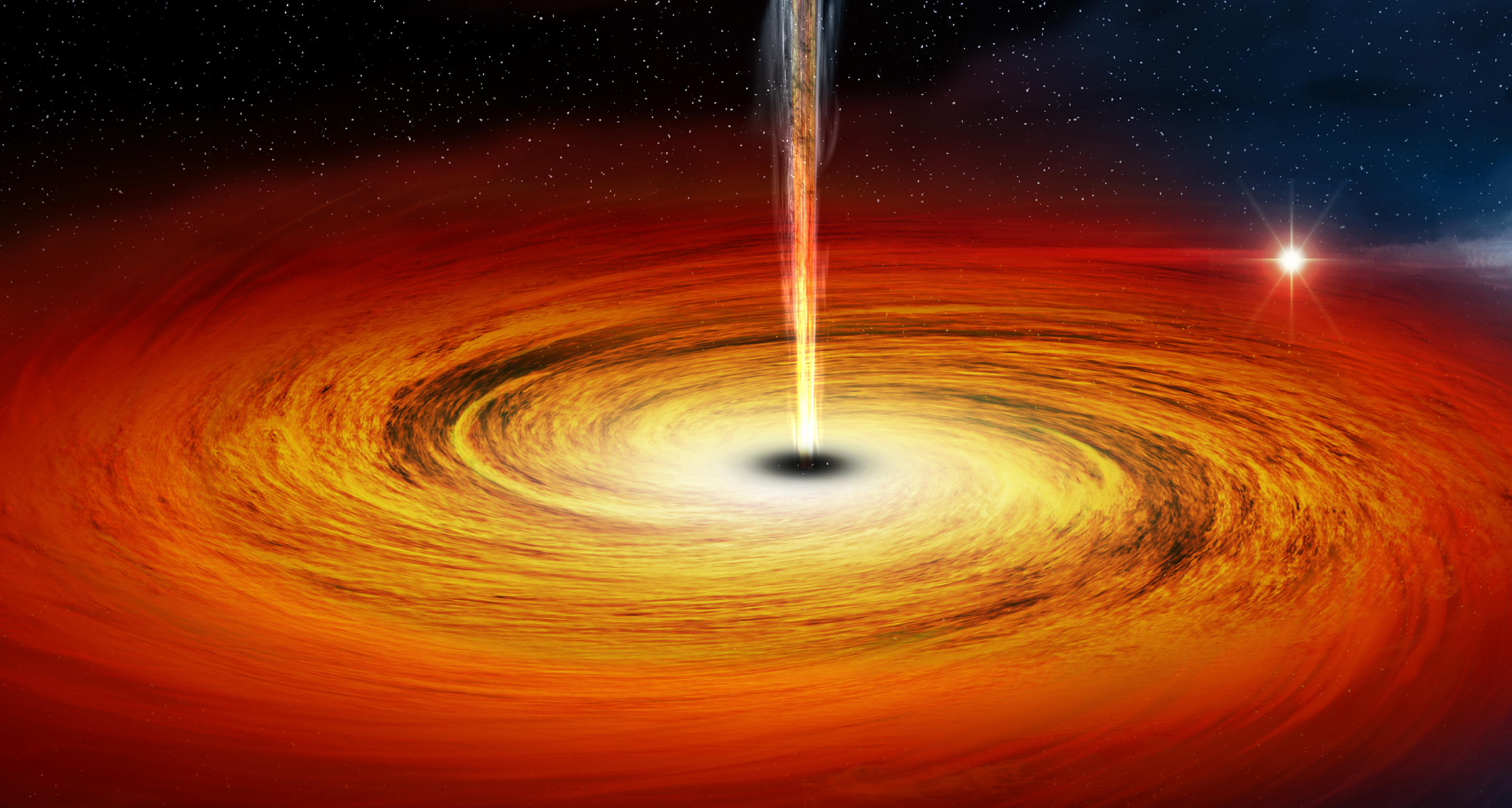 Illustration
Illustration
Black Holes (def.): A dense, compact object whose gravitational pull is so strong that - within a certain distance of it - nothing can escape, not even light.
Did you hear that astronomers took the first direct image of a black hole? Billions of people around the world saw this image (right) from the Event Horizon Telescope (EHT) that captured the last light (in the form of radio waves) before it crossed the threshold around the black hole called the "event horizon" in the galaxy M87.
While this image is amazing, it is not the first black hole that scientists have studied. In fact, astronomers think that most galaxies have black holes at their centers. And not all black holes are alike. The very biggest are called "supermassive" black holes and they can contain millions or even billion times the mass of our Sun. (The black hole in this now-famous M87 image weighs a whopping 6.5 billion times the mass of our Sun.) The size of the black hole in its center is also tied to the size of the galaxy it lives in. The bigger the black hole, the bigger the galaxy, and vice versa. Black holes come in a range of sizes and can be about five times the mass of our Sun. These "stellar-mass" black holes are created when a giant star runs out of nuclear fuel and collapses on itself.
Black holes also are different than one another in how they behave. Some black holes are actively consuming gas and dust that has been pulled inward their by ravenous gravitational appetite. Because the material is super-heated as it gets close to the black hole, the region around it glows brightly in many types of light. The galaxy M100 has such as active black hole and scientists have used different telescopes to learn more about it and the galaxy it inhabits.
When a star runs out of nuclear fuel, it will collapse. If the core, or central region, of the star has a mass that is greater than three Suns, no known nuclear forces can prevent the core from forming a deep gravitational warp in space called a black hole.
A black hole does not have a surface in the usual sense of the word. There is simply a region, or boundary, in space around a black hole beyond which we cannot see. This boundary is called the event horizon. The radius of the event horizon (proportional to the mass) is very small, only 30 kilometers for a non-spinning black hole with the mass of 10 Suns.
Code & Color M100
Messier 100, or M100, is a spiral galaxy located in the constellation Coma Berenices, about 50 million light years away from Earth. Its spiral arms swirl around the center of the galaxy, and are marked by a flurry of star formation that glow vividly in infrared light. Optical data from the Hubble Space Telescope show the bright core of the galaxy and the innermost parts of its spiral arms. The core also glows strongly in X-rays and there are X-rays sources throughout the spiral arms that include exploded stars and stellar-mass black hole. One of these point-like X-ray sources is SN1979c, the youngest supernova ever observed in our cosmic neighborhood seen from Earth in 1979. The blackhole may have been formed by this supernova.
(*)M100 has an active galactic nucleus, or AGN, where a supermassive black hole is actively swallowing material as it falls inwards. This causes the region around the galaxy’s center to glow brightly in different types of light. Like M100, our Milky Way is a spiral galaxy and has a supermassive black hole at its center. Unlike M100, however, our central black hole is largely quiet compared to other active galaxies seen across space.
With our coding activity, you can create your own image of this spiral galaxy, M100, with a supermassive black hole at its core, using the NASA data shown here. Learn how to use basic coding to composite the information together, and color it into an image.
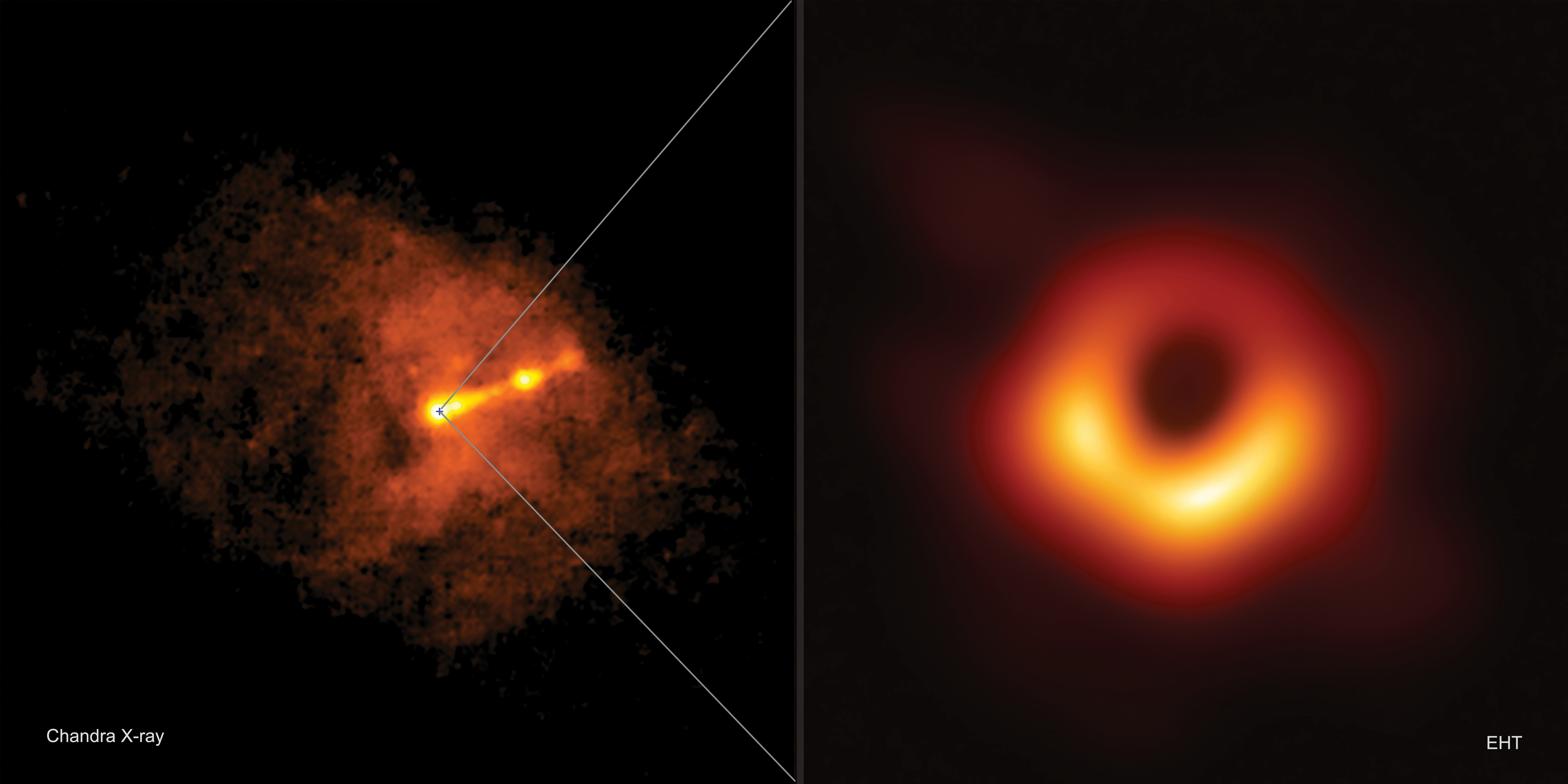
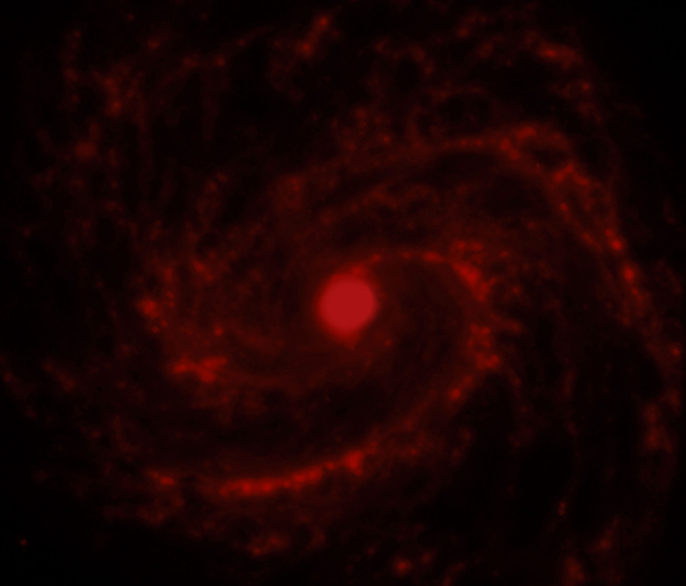 Infrared
Infrared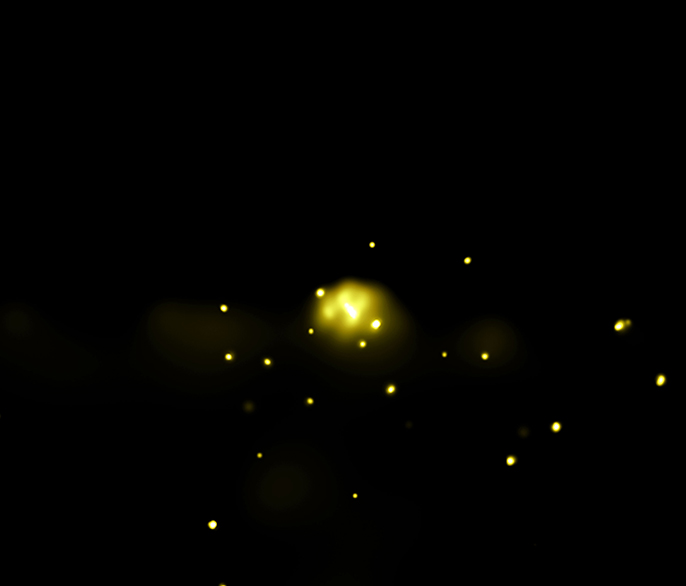 X-ray
X-ray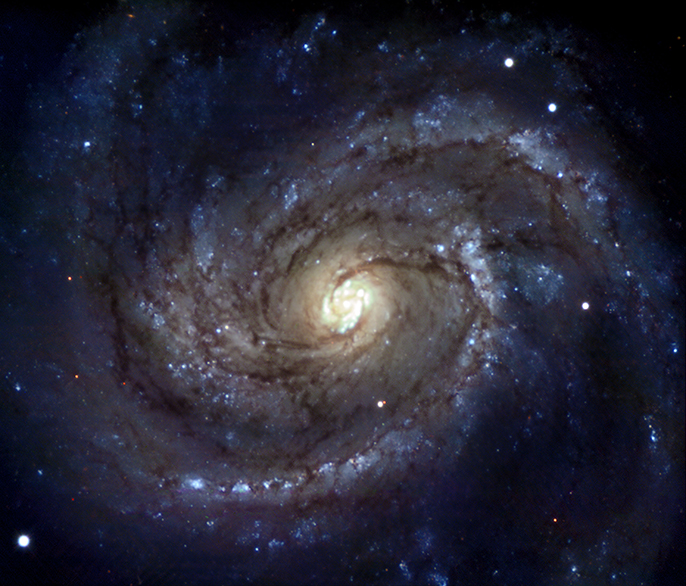 Optical
Optical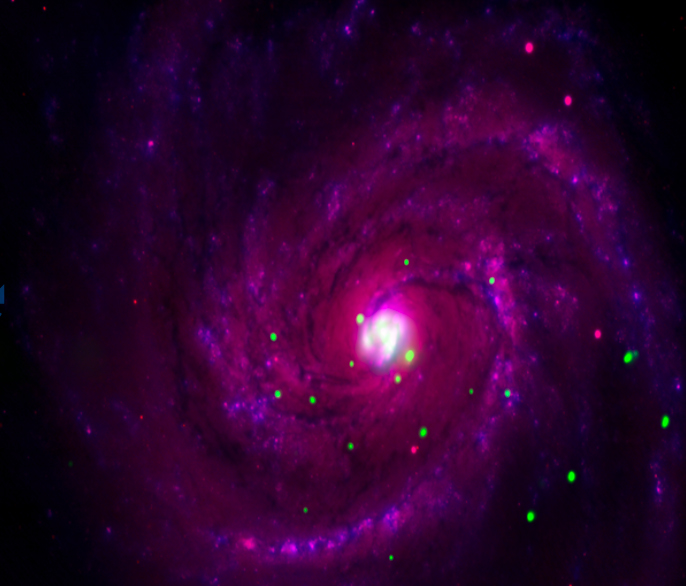 Composite
CompositeGlossary
accretion disk A disk of gas and dust that can accumulate around a center of gravitational attraction, such as a normal star, a white dwarf, neutron star, or black hole. As the gas spirals in due to friction, it becomes hot and emits radiation.
event horizon Imaginary spherical surface surrounding a black hole, with radius equal to the Schwarzschild radius, within which no event can be seen heard, or known about by an outside observer.
singularity A point in the universe where the density of matter and the gravitational field are infinite, as in the center of a black hole.
relativistic jet A powerful jet of radiation and particles traveling close to the speed of light
